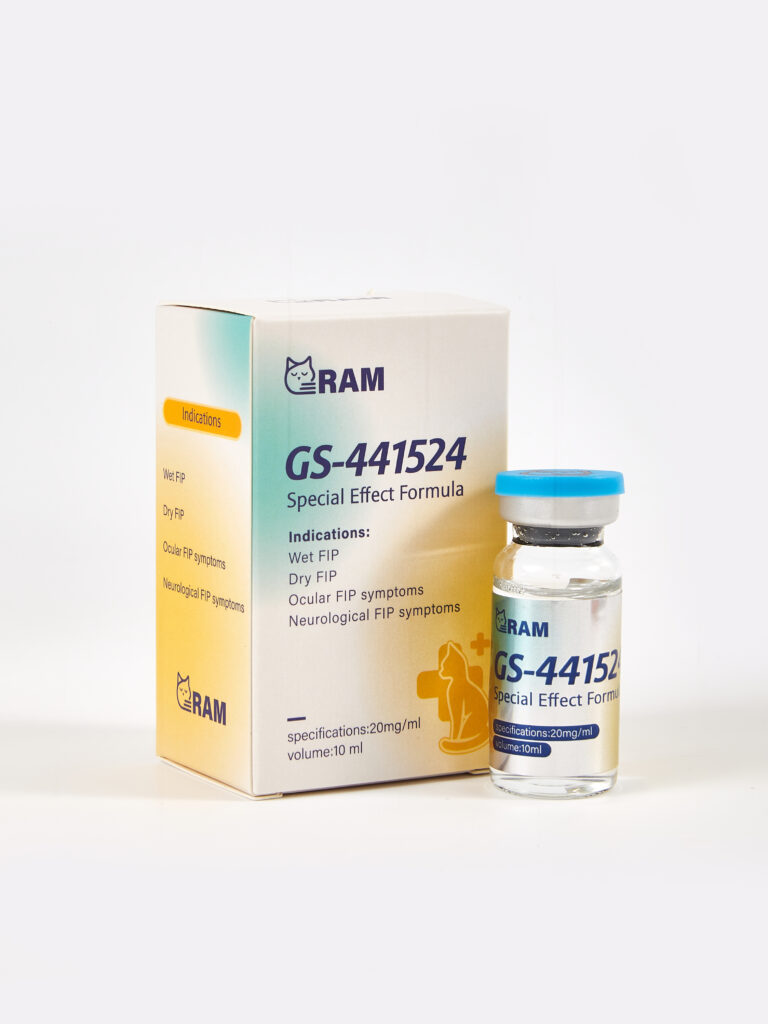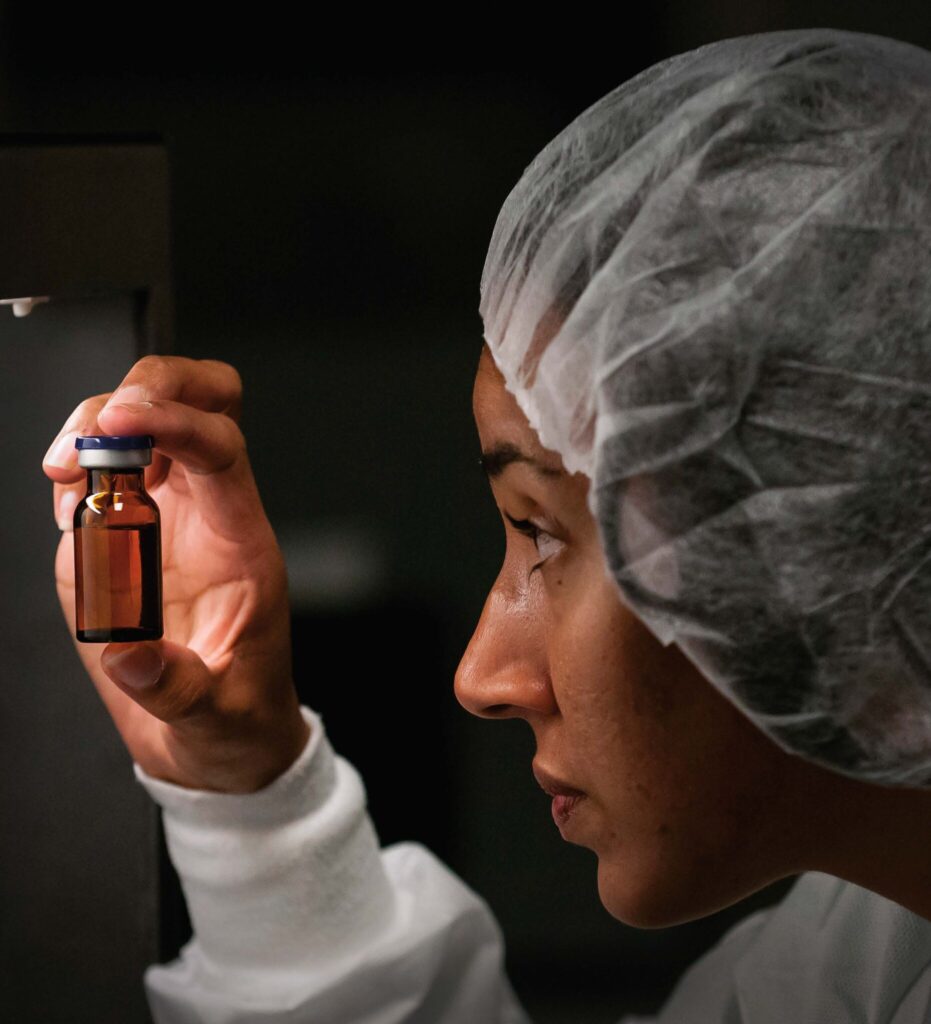How is Feline Infectious Peritonitis Treated?
Feline Infectious Peritonitis (FIP) is a fatal disease caused by the mutation of feline coronavirus (FCoV). It was once associated with extremely high mortality due to the lack of specific therapies. With advancements in medical research, a comprehensive treatment plan centered on antiviral drugs combined with supportive care has been established, significantly improving the survival rate of affected cats. The following is a detailed treatment strategy:
I. Antiviral Drug Therapy: Core Protocol
1. Nucleotide Analogs (First-choice Medications)

- GS-441524 (Remdesivir Pro-drug)
- Mechanism of Action: Inhibits viral RNA polymerase to block viral replication.
- Administration: Subcutaneous or intramuscular injection at a dosage of usually 2–4 mg/kg once daily. The treatment course should be at least 84 days (continue medication for 4–8 weeks after symptom remission to prevent recurrence). Some cases may require extension to over 12 weeks based on recovery.
- Advantages: Effective for both wet and dry FIP with minimal side effects (mild redness/swelling at the injection site may occur; liver function monitoring is needed for long-term use).
- GC376
- Mechanism of Action: Inhibits viral 3C-like protease to prevent viral assembly.
- Administration: Subcutaneous injection at 5–10 mg/kg once or twice daily, typically requiring a course of over 12 weeks.
- Note: Slightly less effective than GS-441524 when used alone, often serving as an alternative (e.g., during drug shortages) or in combination with other medications.
2. New Oral Medications (Cutting-edge Advances)
- Oral GS-441524 Derivatives: Oral formulations entered clinical trials after 2023, suitable for long-term maintenance therapy to reduce injection discomfort. However, they are not widely available yet, and the latest veterinary guidelines should be followed.
II. Supportive Care: Improving Physical Condition
1. Correcting Dehydration and Electrolyte Imbalance
- Intravenous Infusion: For dehydration caused by vomiting, diarrhea, or ascites, use lactated Ringer’s solution or normal saline to maintain acid-base balance.
- Subcutaneous Fluid Administration: Suitable for mild cases or convalescent cats at home to relieve dehydration.
2. Nutritional Support
- High-energy Diet: Feed high-protein, high-fat prescription diets (e.g., renal or hepatic specialty diets) or homemade digestible foods like cooked chicken breast and fish puree.
- Appetite Stimulants: Such as cyproheptadine or mirtazapine to improve anorexia. In severe cases of food refusal, force-feeding via nasogastric or esophageal tubes is required.
3. Management of Anemia and Hypoproteinemia
- Anemia: If hematocrit (HCT) < 20%, blood transfusion or erythropoietin (EPO) is needed.
- Hypoproteinemia: Supplement with albumin (intravenous infusion) or plasma to alleviate ascites formation.

III. Symptomatic and Complications Treatment
1. Inflammation Control and Immunomodulation
- Glucocorticoids: E.g., prednisolone (1–2 mg/kg/day), relieves dyspnea caused by ascites/pleural effusion or central nervous system inflammation. Must be used in combination with antiviral drugs (avoid monotherapy, which may exacerbate viral replication).
- Interferon ω (Feline-specific): Subcutaneous injection at 100,000–500,000 IU/kg daily to enhance immune response (efficacy is controversial; use as an adjuvant).
2. Ascites and Pleural Effusion Management
- Paracentesis/Drainage: Remove fluid via abdominal or thoracic puncture to relieve respiratory distress. Note electrolyte supplementation and avoid frequent punctures (may cause protein loss).
- Diuretics: E.g., furosemide (2–4 mg/kg, oral/injection), used only for mild effusion with close monitoring of urine output and electrolytes.
3. Prevention and Treatment of Secondary Infections
- Antibiotics: Use broad-spectrum antibiotics (e.g., amoxicillin-clavulanate) for 1–2 weeks if bacterial infections (e.g., pneumonia, urinary tract infection) are complicated.
IV. Nursing and Management Key Points
- Environmental and Stress Control
- Provide a quiet, warm environment, reduce exposure to strangers and environmental changes, as stress may induce or worsen FIP.
- Isolate infected cats: Although FIP itself is not directly contagious, feline coronavirus can be transmitted via feces. Other cats in multi-cat households should be tested for coronavirus and prevented.
- Regular Reexaminations
- During treatment, check blood routine, biochemistry, and abdominal ultrasound (assess ascites changes) every 2 weeks.
- After drug withdrawal, recheck monthly for 6 months to monitor recurrence signs (e.g., weight loss, anorexia, reappearance of ascites).
- Cost and Drug Accessibility
- Antiviral drugs are expensive (e.g., GS-441524 costs about 2,000–5,000 CNY monthly). Plan the treatment budget in advance and consult regular veterinary hospitals or obtain drugs through legal channels (avoid counterfeits).
V. Preventive Measures
- Reducing Coronavirus Transmission
- Clean litter boxes regularly and disinfect the environment with chlorine-containing disinfectants (coronaviruses are sensitive to ether and formaldehyde).
- Quarantine new cats for 4–6 weeks before introduction and avoid overcrowding in multi-cat environments.
- Controlling Stress Factors
- Avoid frequent moving, boarding, or family personnel changes. Provide sufficient litter boxes, food bowls, and resting areas (follow the “one per cat + one” principle).
- Vaccine Controversy
- Current FIP vaccines (e.g., FIPV vaccines) have limited protection and are controversial. They are not recommended as the primary prevention method; the focus remains on reducing coronavirus infection and stress management.
VI. Prognosis and Relapse Risk
- With active treatment: The survival rate for wet FIP is 60%–80%, and for dry FIP (e.g., ocular or neurological symptoms) is 70%–90%, but the course must be strictly completed.
- Relapse factors: Inadequate treatment course, premature withdrawal, stress, or immunosuppression (e.g., improper glucocorticoid use) may lead to relapse, increasing treatment difficulty.

